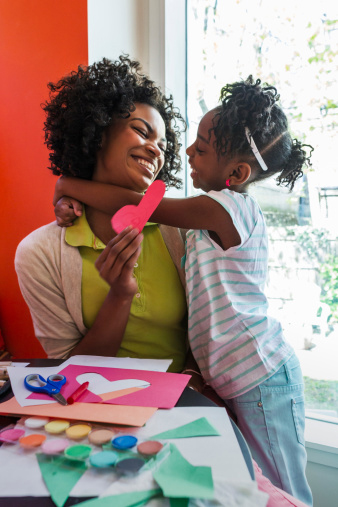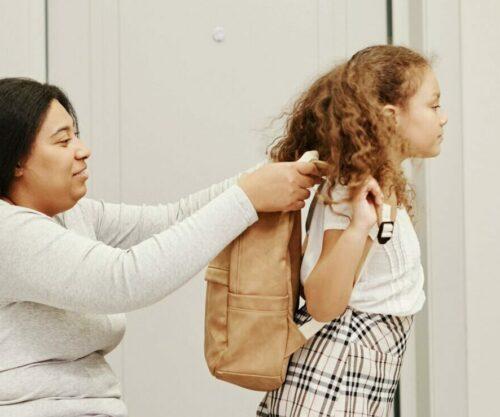
As a parent, you understand the importance of successfully communicating with your little one and, more importantly, encouraging them to communicate well with you and others. If you’ve ever had to tell your toddler to put on their shoes ten times before getting a reaction, you’ll know what we mean. And if you’ve seen your munchkin’s exasperated face while they wail ‘mommy, you don’t understand what I mean’, you’ll be keen to help them improve these fundamental skills.
However, improving the way your child expresses themself and understands what others say to them, doesn’t always have to involve complicated activities or lengthy discussions. Play is often the best way to encourage and improve your child’s communication skills!

Mysmartkid’s shares 9 favourite games to do just that:
Terrific telephone
You might remember this old classic from your own youth, but it is still a fantastic way to improve your sweetie pie’s listening skills. Match the length and the complexity of the message you whisper in their ear to their age and ability. Keep it light-hearted and laugh together if they get it wrong. There is no limit to the number of players you can involve in this game, but it is still a whole lot of fun even when it’s just you and one child. If you want to make it even more interesting, spend a few minutes on making a ‘telephone’ from plastic cups or tins and a piece of string.
Get emotional
Page through some old magazines with your sweetheart and cut or tear out pictures of people clearly modelling a specific emotion. Depending on their age, your little one can help with this part. Paste the pictures on old playing cards or cardboard to make a set of emotion flash cards. Go through the set and talk to your child about each emotion depicted. Now take turns to mimic that emotion with your faces and body language. For example, if the face shows excitement, jump up, widen your eyes and put on a big smile. Similarly, if the face shows anger, encourage your little one to scowl, cross their arms and portray their dissatisfaction. This game is great for teaching your child more about non-verbal communication.
Messy instructions
This game works best with three people so ask a sibling or friend to join in. Grab a tub of yoghurt or something deliciously messy. Blindfold the child who wants to be the feeder. Now have the other child give them instructions on which way to aim the spoon when trying to feed you. (Remember not to wear your favourite top – this will get messy!) Soon you’ll all be in hysterics as the snack makes its way to your cheeks, chin and nostrils, but your children will learn valuable lessons in giving and listening to instructions.
Perfect picture
Find a few pictures of objects or activities that really interest your child. Let them tell you exactly what they see in the picture. Ask questions about where the scenario takes place, whether they would want to go there and what they think is happening there. The questions can be as simple or complicated as your child’s age dictates. You can also ask them what they think led to the scene in the picture and what they think might follow. Of course this is also a great way to talk about colours, shapes, emotions or even the weather. The possibilities are endless.
Super sounds
Get noisy with your little one! Pick a household utensil or piece of kitchen equipment and ask them to close their eyes and listen very carefully. Now make a noise with the chosen item. You can, for instance, bang a spoon against a pot of swish a mop in a bucket. Let your child guess what they are hearing and give them a few clues if they get stuck. This will teach your clever kiddo to really pay attention to what they are hearing, helping them to listen more intently in the future.
Guessing game
Describe a beloved character from a television programme, movie or book to your child and let them ask questions to try and guess who you are describing.
Time for a speech
Now it’s your turn to just be quiet and listen. Ask your little one whether there is any topic or object they would like to tell you more about. Whether it is their favourite movie, dinosaurs or ballet, if you give your undivided attention and let them talk without interruption, they are sure to have a lot to say!
Once upon a time …
Most children love stories! But why stick to the plot when it can be so much fun making it up as you go along? Read your child the first half of their favourite story or start saying a nursery rhyme. Now let them finish it in whatever imaginative way tickles their fancy. You’ll be amazed at what they can dream up and how eloquently they might be able to express themselves.
TV time
Turn on your television and choose an age-appropriate programme. Tell your little one to turn away from the screen and encourage them to guess what emotion the character is feeling depending on the tone of their voice and the words they are saying. Understanding the emotions felt by the person you are talking or listening to, goes a long way to communicating better.
Additional sources: udemy.com; everydaylife.globalpost.com; sendgateway.org.uk; creation.com; livestrong.com.
For more on Mysmartdid, visit www.mysmartkid.com or www.myslimkind.com, or call 0861 555 224.




